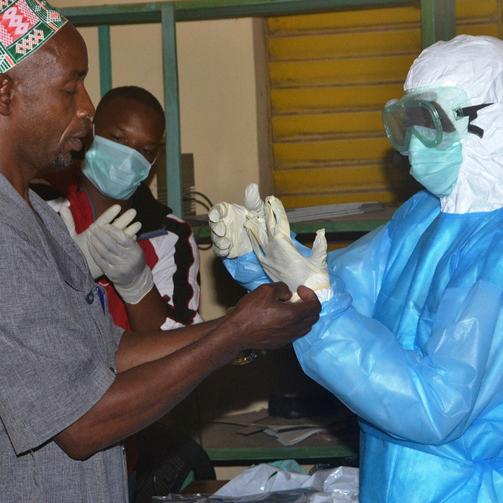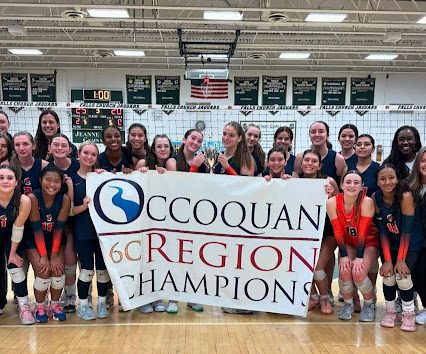t is surreal to imagine an outbreak of a major epidemic in the modern day, but Ebola is a terrifying reality… and one with no cure.
Ebola, a hemorrhaging virus, first appeared in 1976 in Sudan and Zare, though its origin has only been speculated. The first outbreak killed over half of the 284 individuals who contracted the sickness. Today’s mortality rate is even higher, which is unsettling. The current epidemic in West Africa started in March 2014 and has already killed 70% of the 9 thousand individuals infected.
With the sickness running rampant overseas, it was only expected that it might eventually spread. The virus took over news headlines after the first Ebola patient was diagnosed in the US on September 30, after flying in from Liberia through Washington Dulles airport connecting to Dallas. Thomas Eric Duncan, who was admitted to a hospital in Dallas, died one week later. This was not the end of it— the public later learned that two of Duncan’s nurses, Nina Pham and Amber Vinson had contracted the virus.
Virginian’s are growing concerned as Ebola draws nearer, first at Dulles Airport and now in Bethesda, MD, where Pham has been transported to the National Institute of Health for treatment.
“There are conversations [about Ebola] everywhere,” said senior Christina Dao. “The first few symptoms are so general, they could be anything— I think that’s why people are growing paranoid.”
The early stages of the virus do closely resemble those of flu symptoms. From two to 21 days after exposure to Ebola, those who are infected experience a fever, muscle pain, and weakness. It’s hard to be certain of your ailment until the symptoms grow more severe, with vomiting, diarrhea, and hemorrhaging.
This virus can only be spread through contact with bodily fluids of an infected person, which rules out the problems associated with airborne contagion. A common misconception is that by being around a person with symptoms of Ebola, someone can catch it. This is false— only by coming into contact with a sick person’s bodily fluids (e.g. vomit), does one have the possibility of contracting it.
“When you have crazy fears, you run under the assumption that people with Ebola are walking around the streets,” said Glen Barbour, a Fairfax County Public Safety Information Officer. “In truth, there are now many layers preventing the virus from coming into the country again and spreading. There are new fever screenings and surveillance of those exemplifying symptoms at airports, and those who are currently sick are isolated.”
The ones who are most at risk are health professionals, rather than the public, because they are dealing with the infected in close quarters.
In Africa, inadequate regulations have contributed to the increasing casualties.
“My mom lives in Sierra Leone; she’s working as a nurse with the World Health Organization,” said senior Shaquira Cole. “In rural areas, the people don’t know any precautions. Everyone touches the dead bodies [of Ebola victims] and [the virus] spreads even more.”
Cole is concerned about her mom’s safety.
“School isn’t in session. Planes aren’t flying there. Sierra Leone is already a poor country, so it will take forever for the people to get back on their feet. It’s scary—I don’t know when I’ll see my mom again. But she calls me and I call her, so I know how she’s doing.”
There are two main factors that fuel the epidemic in West Africa that are not present in the US: the lack of infection control practices and African burial rituals, like washing the body of the deceased. The US public health system is comparatively very efficient, so it is highly unlikely that an outbreak similar to the one in West Africa will occur. But for those already infected in the US, the most that can be done without a known cure is containing the virus by quarantine and treating symptoms to prevent other infections.
Fairfax County is the first public school system in Northern Virginia to implement fever screenings for students. Though the Center for Disease Control did not implement the regulations, the Fairfax County Health Department requested that the CDC assist in creating accurate questions to keep a watch on Ebola.
“If a student comes to the school health room and has a fever, the School Health Aide will ask if the student has been to Sierra Leone, Liberia, or Guinea in the last 21 days,” said Barbour. “If yes, the student will be isolated, his or her parents will be called, and the Health Department will follow up with further assessment. New students are being screened at the registrar’s office to determine if they have traveled to one of those three countries in the last 21 days. If [they have], the Health Department will follow up to gather additional information.”
Though there are now guidelines to ensure the safety of FCPS students, the Ebola virus has been under control so far, so there’s no need for concern. The only epidemic that threatens the US is widespread paranoia. This is entirely avoidable if society stays educated on the topic and keeps up with the news.
“We’re not at risk here at West Springfield [High School]. Even within Fairfax County, we don’t have an influx of people from Ebola-risky places,” said WS Assistant Principal Becky Brandt. “What’s coming into play here is the fear factor. Still, our greatest concern is the health and safety of students and teachers. We’ll take every precaution.”
Categories:
Students are growing wary of Ebola

Photo courtesy of CELLOU BINANI
0






